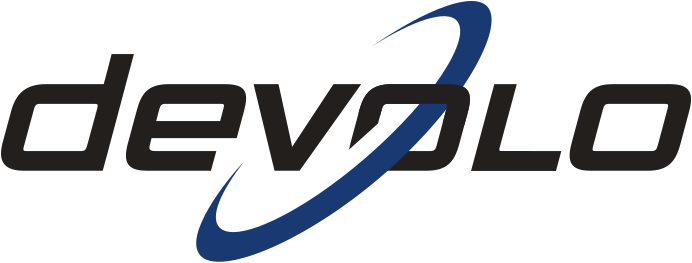The Fraunhofer HHI in Berlin is a world leader in the research of mobile and optical communication networks and systems, fibre-optic sensor systems as well as the coding of video signals and image data processing. The HHI coordinates the overall project. HHI will carry out pioneering work on the optical front ends for the next generation of LiFi technology using laser and photodetector arrays. HHI will conduct preliminary research on the next generation of PONs for building networks and will look into concepts for the next generation of PLC-based building networks. HHI will investigate the coordination of multiple wireless access points and demonstrate the distributed MIMO concept. HHI will also work on modularisation, programmability, softwareisation and control of WLAN at the MAC and network layer.
MaxLinear Germany develops semiconductors, software, and systems for home networking and access networks (www.maxlinear.com). The history of the company goes back to Siemens Semiconductors and has developed further to today’s MaxLinear Germany GmbH via intermediate stations at Infineon, as Lantiq GmbH and at Intel.
Based in Munich, MaxLinear Germany is responsible for the development of optical transmission technology (PON) in addition to DSL, Ethernet, and WLAN software. MaxLinear leads AP2, carries out the pre-development of important sub-functions of the next generation semiconductor devices (AP3) and deals with the coordination of WLAN networks (AP4).
The ICCAS at the University of Leipzig is a pioneer in computer-assisted technologies and intelligent assistance systems in medicine, at the interface between clinical requirements and innovative medical products. The aim is to improve therapy methods and work processes to increase patient safety and the technologies relevant to this. The ICCAS will set up a test field for the application of LiFi and WLAN in medical technology and comprehensively evaluate the systems (WP2, WP6). The goal of ICCAS in the 5G-COMPASS project is to integrate current and future communication technology into medical (technical) care. This task is divided into setting up a medical test environment and designing and developing a modular test platform for manufacturers of medical devices and for manufacturers of network components.


Devolo was founded in 2002 and is represented in 19 countries. Solutions that have been tried and tested millions of times over bring high-speed Internet and mesh WLAN to every corner of buildings via the power grid. In the professional sector, the vision of the comprehensively networked IoT is being pursued with secure, high-performance data communication for the industry and energy sector. The focus of devolo AG lies in the acquisition of new scientific knowledge, its development, testing, its first concrete application and practical implementation in demonstrators. Devolo is leading work package 3 and is working on the research and development of future-proof technologies with a focus on PLC, WLAN, LiFi and FttH PON.
T-Systems offers the full range of cloud solutions and supports all DAX 30 companies in Germany as well as 100 of the top Fortune 500 companies with classic ICT services, cloud-based services including international networks, customised infrastructure, platforms and software as well as new business models and innovations on the Internet of Things, blockchain and artificial intelligence. T-Systems is leading WP 6, which, together with the WvSC, will provide an industrial reference test bed that includes 5G infrastructure, (edge) cloud and robotics and will enable a realistic comparison with LiFi and WLAN building networks. As a result, the findings and impact on the application behaviour in robotics control and management will be described and evaluated, taking into account different options and architectures (WP6).
Teraki GmbH is a software specialist for autonomous vehicles (cars, delivery robots, forklifts) that has been in existence for 8 years. The company specialises in highly efficient embedded processing of sensor signals (lidar, radar, camera) in vehicles. Together with T-Systems and WvSC, Teraki is conducting the requirements analysis for the industrial demonstrator in WP2, supplying the application-side instrumentation (vehicles, sensors, software components) and taking the lead in implementing and testing the mobile robotics scenario as an industrial application (WP6). For this purpose, experimental last-mile delivery robots equipped with novel sensor technology will be used to explore the benefits of the convergent 5G-COMPASS access network for functions of autonomous and teleoperated robotics in a practical manner. The network focus is on the integration of LiFi hotspots in the communication between robots and edge computing-based control functions and applications under the special requirements of an industrial working environment.
The Werner-von-Siemens-Centre for Industry and Science e.V. (WvSC) has existed since 2019 as a non-profit association for research cooperation in Siemensstadt in Berlin. The research fields address the technological challenges of industrial manufacturing, energy transition and mobility transition. The WvSC is working on WP 2 in order to add the industrial perspective to the requirements of the system concept for future building networks. The main contribution of the WvSC is the conception and construction of the industrial test field for the demonstration of project results in WP6. The demonstrated use case is an edge-cloud controlled mobile robotics application, where the connectivity is provided by a seamless combination of LiFi, WiFi and 5G networks. Demonstrations will be conducted on-demand for groups of visitors, thus creating broad awareness of the results. Feedback from this will be documented and fed back to the project partners.
Teleconnect GmbH is today an engineering office and service provider for contract development of complete product development from the idea to the production transition and series support for the wired and optical transmission and the associated signal processing at (DSL, G.hn, PON and LiFi). Our services are turnkey electronic development, hw design and testing, embedded sw development, industrial design, FPGA programming and much more. In the 5G Compass project, Teleconnect GmbH will use its expertise in WP2.4 specifically in conjunction with the Home-Grid Forum as a central body for the deployment and future development of G.hn Technology. in WP3, in the field of LiFi, specifically regarding the PLC channel model, frequency regulation and PLC system testing. In WP6. A system conception and implementation in cooperation with MaxLinear for an industrial application will be carried out focusing on the technologies PLC, as well as PON and FttR- where major points of contact and synergies are also expected from the work, e.g. in the Homegrid Forum.
QuantiCor Security GmbH from Darmstadt develops quantum computer-resistant security solutions for IT infrastructures and the Internet of Things (IoT). As an expert in post-quantum cryptography, it supports and advises companies in the migration towards quantum-safe IT infrastructures and also provides quantum computer-resistant security technologies to implement future-proof cloud and network applications. QuantiCor has also developed a first standard (DIN SPEC 91444) for quantum-safe encryption. In 5G-COMPASS, QuantiCor will work with its partners to develop the requirements for a quantum computer-resistant network. The security of the network is the focus of the work. In particular, the goal is to ensure that the communication of components within the network is also protected against quantum computer attacks. Further, a quantum-safe communication protocol for real-time applications is being designed and developed.
TU Braunschweig is developing efficient algorithms for resource allocation and multiple access in reliable interference networks at the Institute of Communications Engineering and the Department of Information Theory and Communication Systems (TUBS-IK). TU-Braunschweig will lead WP4 and contribute to the development of the PHY and MAC algorithms (WP3, 4). In WP3, the focus is on modelling and describing the reliability when using multi-connectivity and multi-RAT (radio access technologies), in particular WLAN access points and LiFi access nodes. Developments in the new 802.11 Ultra High Reliability SG working group and in the standardisation of LiFi home networks will be closely monitored during the project and beyond. The development of suitable functional splits for the selected front- and backhaul topology will be supported and elaborated.
HS Nordhausen University of Applied Sciences develops, evaluates and assesses practical algorithms for cross-layer resource allocation in WLAN networks (PHY, MAC). The HS Nordhausen will coordinate the 5G scenarios and experiments for the joint optimisation of MAC and PHY parameters for WLAN resource allocation (AP4, 6) and evaluate them as test trials on OpenWrt Linux WLAN routers with regard to dynamic transmission power control. The expertise of Prof. Hühn’s department in planning, setting up and operating ICT testbeds for measurement data collection and analysis and their remote processing options, including user and rights management for all partners involved.

NewMedia-NET GmbH (NMN) from Bensheim, Germany, co-develops the open source IEEE Std 802.11 stack in the Linux kernel, the mac802.11 subsystem, for embedded WLAN routers and is home of the DD-WRT open source router firmware project. The rate control algorithm „Minstrel_HT“ in the Linux kernel is used in many WLAN routers, as well as open source GNU/Linux drivers for various 802.11ax chips, such as „mt76“ for the MT76xx/MT79xx chipsets from MediaTek and other manufacturers, client management via multiple access points and various innovative technologies such as Quosify, a novel QoS approach that is used in the TIP OpenWifi project, among others. In 5G-COMPASS NewMedia-NET will work on the development of mechanisms for the coordination of WLAN access points and novel QoS functions. This also includes the prototypical implementation of transmit power control in Linux user space & merging with rate control to evaluate a joint optimisation of wireless connections (WLAN) based on both sets of parameters across different wireless access points.
Karl Leibinger Medizintechnik, a company of the KLS Martin Group, develops medical technology solutions such as surgical lights, implant systems, sterilisation containers and surgical instruments. The birth of the KLS Martin Group dates back to the 19th century with the founding of Karl Leibinger Medizintech-nik in 1896.Today, the company consists of several production and sales companies worldwide, which were merged in 2004 under the umbrella brand KLS Martin Group.The focus of klsmartin in this project is the testing of new transmission technologies. Our goal is to further develop our products and to use new and safer technologies. The aim is to integrate our surgical lights into the network and thereby create customer benefits.
At TU München (TUM), the Chair of Connected Mobility conducts research on network, protocol and system architectures and systems for robust real-time communication in dynamic environments. TUM is leading WP5 and will measure, evaluate and further develop transport protocols and QoS mechanisms to enable the joint use of different networks for the parallel connection of mobile end devices. For this purpose, TUM will setup evaluation environments for multipath transport protocols: One the one hand, using simulation or emulation tools, on the other hand by installing a testbed with 5G-COMPASS-specific components and functions, such as Wi-Fi and Li-Fi modules. In WP5.3, TUM will examine the utility of telemetry information from selected network components for transmission path selection, and rate and congestion control mechanisms. In WP2, TUM will contribute to the development of the overall network architecture and to possible standardisation efforts of Internet protocols for real-time and/or multipath communication.
SurgiTAIX AG, a spin-off of RWTH Aachen University, specializes in developing, manufacturing, and certifying medical products and solutions for the networking of medical devices. The company is involved in IEEE 11073 SDC family standards and is making its SDC middleware LiFi-capable. SurgiTAIX will evaluate the LiFi-capable operating room light in a demonstrator and collaborate with KLS Martin and the ICCAS throughout the project. In T2.1, the project will determine the requirements for the new transmission technology, and in T2.2 and T2.3, it will develop a software concept for integrating the existing light into the demonstrator. The implementation of the conceptual work takes place in WP 6, where critical functions are determined in T6.1 and test scenarios are developed in T6.2. In T6.3, SurgiTAIX adapts its middleware to establish compatibility with the LiFi module and map the device requirements. After integration, the results will be evaluated for the OR light and other systems.